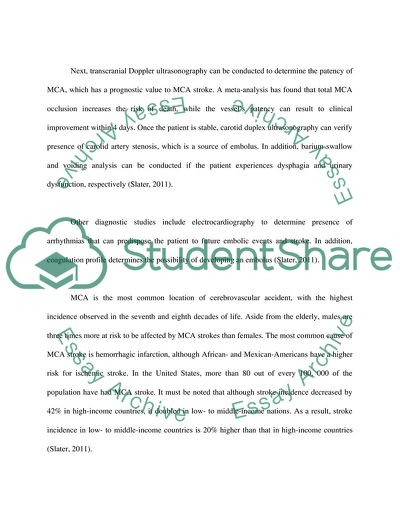Cerebral Vascular Accident (CVA) Research Paper Example | Topics and Well Written Essays - 500 words. https://studentshare.org/medical-science/1787677-left-cerebral-hemisphere-infarction-due-to-middle-cerebral-stroke
Cerebral Vascular Accident (CVA) Research Paper Example | Topics and Well Written Essays - 500 Words. https://studentshare.org/medical-science/1787677-left-cerebral-hemisphere-infarction-due-to-middle-cerebral-stroke.


